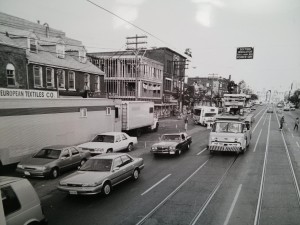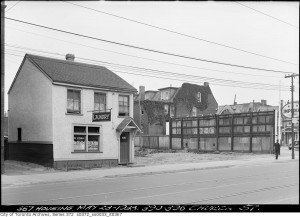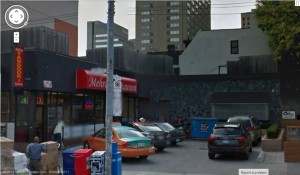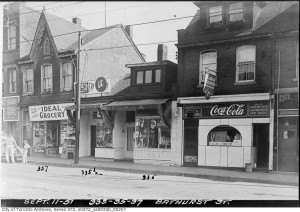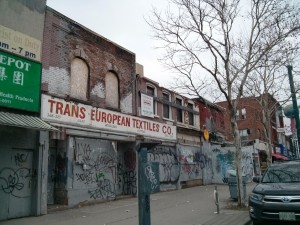
The Chinese in Early 20th Century Toronto: 372 Spadina Avenue – Mark Lum
Only a year after Yoong took over, 372 Spadina was exempt from the assessment roll. This means that a laundry service was no longer in operation and the building was empty.
Years later the property was sold to Alfred G. Brown who operated a barber and cigar shop at 372 and the neighbouring space next door.
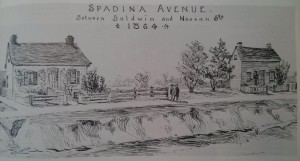
This is what the block, where Mark Lum’s Laundry was situated, would have looked like 37 years before he started.
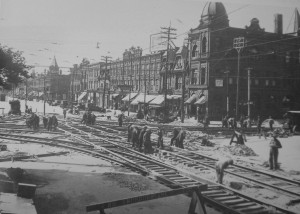
Reconstruction of Spadina and College in 1927 –Lum’s Laundry is just one block south from this photo —
Works Cited
Assessment Roll: Ward 4 Division 2 1899
Assessment Roll: Ward 4 Division 2 1901
Assessment Roll: Ward 4 Division 2 1902
Assessment Roll: Ward 4 Division 2 1903
Assessment Roll: Ward 4 Division 2 1909
Assessment Roll: Ward 4 Division 2 1912
Northwest Corner of Spadina Avenue and Baldwin Street. October, 1973. City of Toronto Archives, Toronto. Print.
Panorama of Spadina Avenue. 1985. Spadina Avenue by Rosemary Donegan. Vancouver: Douglas & McIntyre. Print
Thomson, W.J. Spadina, Baldwin and Nassau. 1896. Metro Reference Library. Spadina Avenue by Rosemary Donegan. Vancouver: Douglas & McIntyre. Print
Toronto Transit Commission. Re-Laying Streetcar Tracks. 1927. Spadina Avenue by Rosemary Donegan. Vancouver: Douglas & McIntyre. Print


